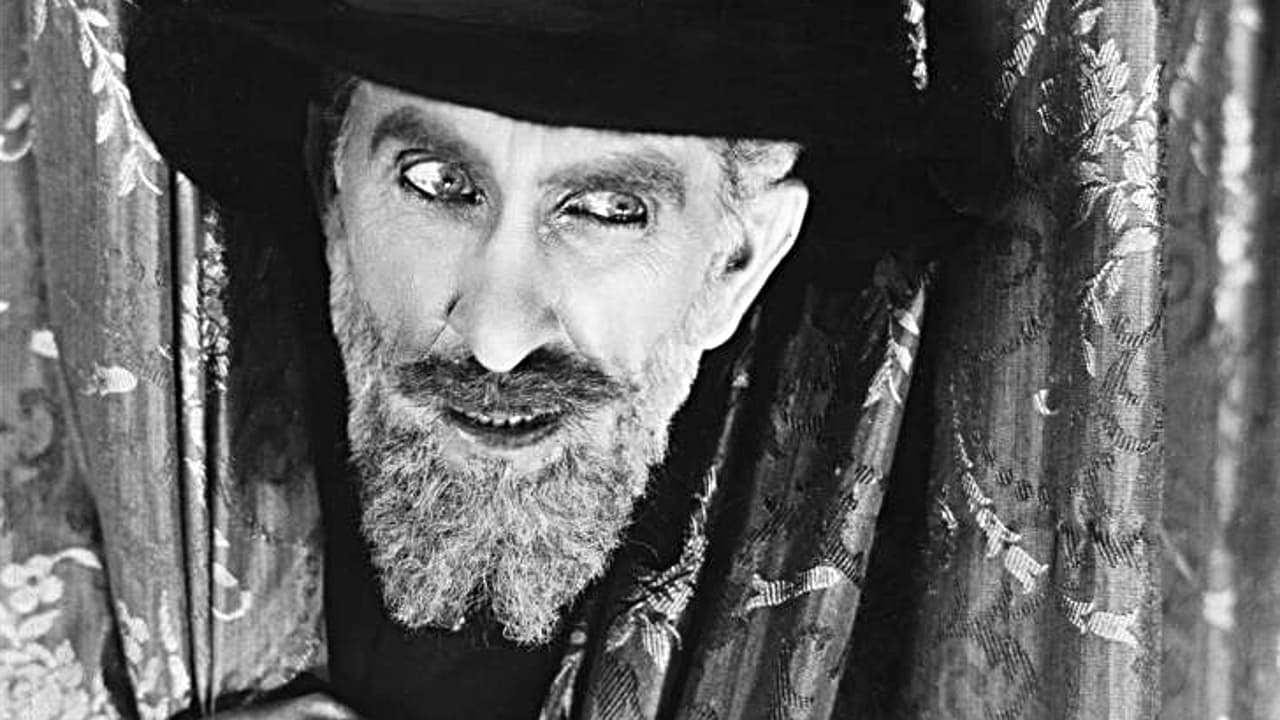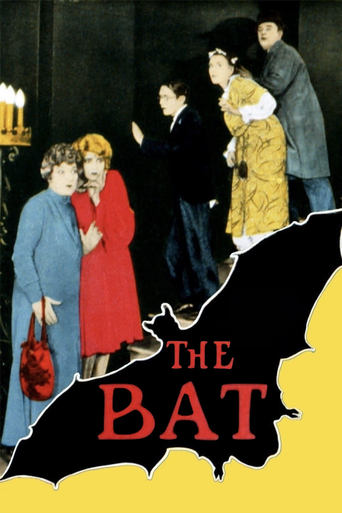

Silent thriller (with comedic undertones) concerning a brazen thief (nicknamed "The Bat") who robs a bank then stalks the occupants of the vast mansion belonging to bank's deceased owner. A motley group of characters join forces in an attempt to solve the mysterious identity of "The Bat" and survive the night as suspicion and double-cross emerge to thicken the plot.It's a fair dinkum mystery that held tight for me until the last frame, which is just what you want from such a motion picture. The acting is typical of the era, so too sets, make-up, cinematography and music, but all very appropriate. The supposedly "haunted" house is an elaborate group of sets, and the only element that I found a little tiresome was the repetitive site gags and stereotypical "dumb" characters ("Bloodhound" the boof-head private detective who's afraid of his own shadow, and "Lizzie" the jittery house-keeper constantly behaving like a circus clown, became irritating after more of the same).Might seem a little laboured, but then the elements of the mystery seem to be necessary to tie together the intricate plot, so when the surprise ending does eventuate, it's very satisfying and all is forgiven. Don't miss the dialogue cards for some pearls like "that Jap butler gives me the willies". So wrong, and so right.
... View MoreThe German expressionist cinema had a huge influence on Hollywood in the twenties as seen in "The Bat". The stylized sets of William Cameron Menzies, the elongated doors, furniture making the people look small. All of it makes "The Bat" a beautiful looking production.Gideon Bell has been notified by "The Bat" that he will be robbed of his famed Favre Emeralds and if he notifies the police he will be killed. The film opens with the police standing by ready to act. Of course "The Bat" has killed Bell, stolen the emeralds and left a note to say he is going to the country before the police realize anything is going on.In the country Miss Cornelia Van Gorder (Emily Fitzroy), her niece (Jewel Carmen) and a zany housekeeper (Louise Fazenda) are leasing an estate but are being forced out because of a disputed will.It turns into an "Old Dark House" style thriller with "the Bat" holding people captive and terrorizing them. I found it exciting and "the Bat" was a real surprise. People who have seen the 1960 Vincent Price film will know what's going on but they are very different films and I think this one is better.Jack Pickford is pretty ordinary as Brookes Bailey, a bank clerk, who is being unjustly accused of embezzling bank funds.Jewel Carmen played the niece, Dale. This was her last film. She was married to Roland West, the director and in the next decade was to be involved in the Thelma Todd murder.
... View MoreYears ago, there used to be a toy football game, which featured little figurines of players, and a vibrating field. The vibrations of the field would cause the figures to move about, like little men running; except that, well, they were like little men running randomly, into each other or into corners or perhaps in useless circles.Unfortunately, after an extremely good start, The Bat begins to remind one of that dreadful vibrating toy. The characters to some extent move purposefully, but much of their behavior just amounts to moving about as if randomly.The film should certainly be judged in context, and the fact is that this film is very much a product of its time. Attacking it for the story that it tells and the way in which it tells it is somewhat like attacking it for being silent and in greyscale; but, after all, it would indeed also be unfair to let a potential viewer think that this movie were a treat for the ears and in glorious color.Those particularly interested the Old Dark House genre should definitely watch this film, as it is either the first of the genre or the immediate precursor. And those interested in the influences that led to the character of the Batman should also watch this film, as the Bat of the title wears a bat costume and swings about the sides of buildings with the aid of ropes, and as there is a sort-of bat-signal.Spoiler: .stiderc eht ni eil a si erehT (And IMDb's spell-checker is okay with ".stiderc"! Go figure!)
... View MoreAn enjoyable farce in the style of "Grand Guignol", which only masquerades as a mystery but in its heart is early horror.Director Roland West was already famous by the time he did this film, having worked with Lon Chaney and other stars, but it stands in many ways as his most significant work. Many people nowadays only know him for his connection to the murder of Thelma Todd. But we can see here his desire to raise the state of the art of suspense cinema, with photography by no less than Arthur Edeson and Gregg Toland. In fact trick photography is evident in a great many of the scenes here, and used to great effect especially in the area of shadows and forced perspective shots.Jack Pickford and Louise Fazenda star as guests in a huge castle which may also be the home to the mysterious "Bat", a masked thief who intimidates his victims with letters prior to dispossessing them of all their jewels. A whole host of detectives descend on the scene when it is learned that the Bat is in the house.None of the performances are particularly memorable. What people will walk away from -- with this and with the innovative sound version, "The Bat Whispers" -- is the sense of charm and fun that these early film-makers associated with murder and horror. This film famously was the inspiration for the "Bat Man" character, who is basically the Bat turned good (the Bat even has a secret hideout in the Gothic mansion in this film just like in those stories). The fact that the character had to be turned into a hero to continue into the 20th Century might just say something about how much more seriously we take crime at this point in our society. Presumably 1920s audiences were expected to sympathize to some extent with the Bat -- after all, all his victims were ridiculously wealthy people who could probably afford to part with a few diamonds.All in all a solid film, a good example of entertainment driven 1920s cinema and the possibilities that were there for suspense even before dialog and camera movement became vogue.
... View More